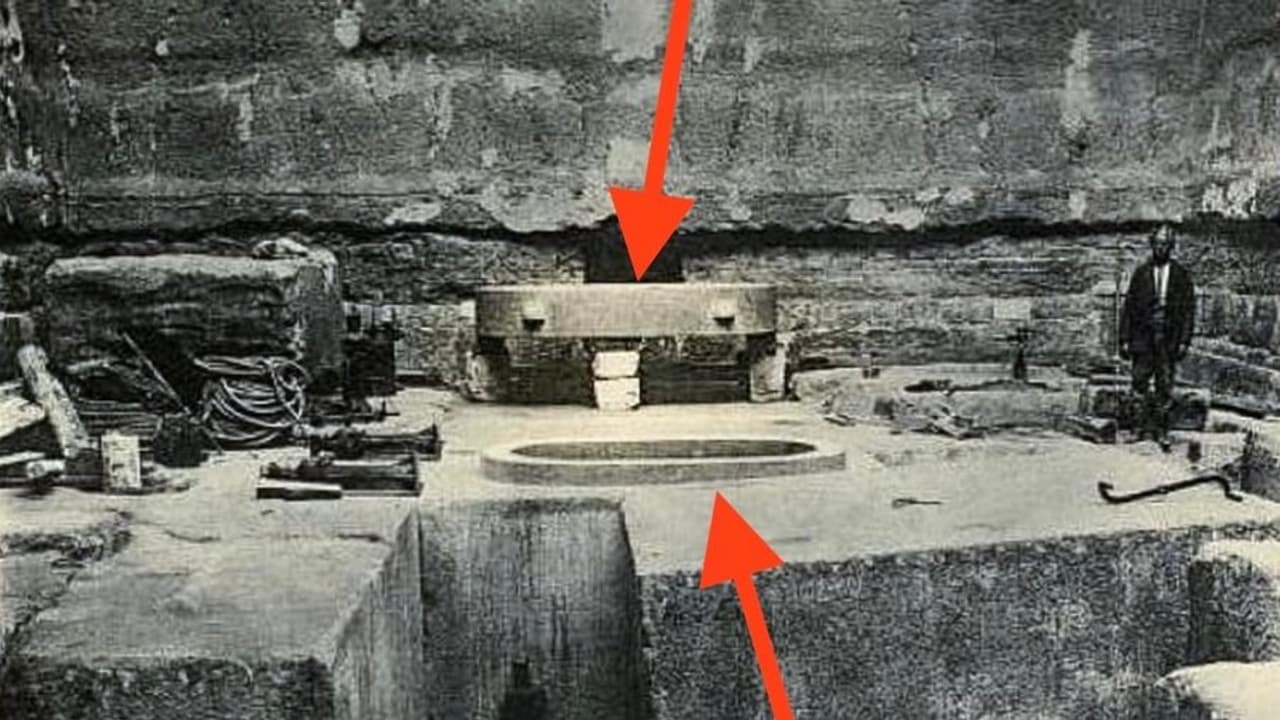Archaeologist Alessandro Barsanti first excavated the site in the early 1900s, uncovering a colossal T-shaped pit carved into solid limestone, nearly 100 feet deep and lined with massive granite blocks.
Merely three miles from the iconic Giza Pyramids lies one of Egypt’s most enigmatic sites – Zawyet El Aryan, often dubbed Egypt’s very own Area 51. Cloaked in secrecy, this archaeological marvel has been under the strict control of the military for decades, shrouding its mysteries in near-total obscurity.
The site first drew scholarly attention in the early 1900s when archaeologist Alessandro Barsanti unearthed a colossal T-shaped shaft carved into solid limestone. Nearly 100 feet deep, the pit is lined with mammoth granite blocks, each a testament to the sophistication and ambition of ancient builders. At its core, Barsanti discovered an oval granite vat, sealed with a perfectly fitted lid, which reportedly contained traces of an unknown substance—now lost to history.
Scholars continue to debate the true purpose of Zawyet El Aryan. Many posit that it was intended as a pyramid that never saw completion; yet no superstructure was ever erected above the pit. Intriguingly, graffiti etched into the chamber walls bears the word ‘Seba,’ which some interpret as the ancient Egyptian term for a ‘gateway to the stars.’
Independent researcher Derek Olsen discussed the mysterious site on the Matt Beall Limitless podcast, proposing that the structure may have been designed as a vessel for cosmic travel or spiritual ascension. The sheer scale and precision of the construction—massive granite floors, smooth limestone walls, and a sealed central vat—have fueled endless speculation about advanced ceremonial or technological purposes.
The enigma deepened in the mid-1960s when the Egyptian military assumed control of the site, halting all modern excavations and tours. Today, Barsanti’s early photographs remain the only detailed documentation of this awe-inspiring complex. Among his finds were inscriptions in black and red ink, including the cryptic phrase ‘Seba-[unknown]-Ka,’ believed to translate roughly to ‘star’ and ‘vital essence’ or ‘life force.’
Olsen contends that this might signify a “gateway to the stars,” suggesting that the ancients sought to transcend earthly confines. Mainstream scholars, however, maintain that the inscriptions likely denote a builder’s name or a historical figure of significance.
The T-shaped shaft, carved directly from bedrock, remains incomplete. Its chamber floors are covered with gigantic granite blocks, each measuring approximately 15 feet long, 8 feet thick, and weighing up to 18,000 pounds. Walls, though flawlessly smooth, were never clad in additional stone, leaving the monumental limestone exposed.
The site is often linked to the 3rd or 4th Dynasties, possibly as the foundation of a pyramid complex that never came to fruition. Others speculate it may have served as an experimental or ceremonial chamber. Olson emphasized the extraordinary feat of moving such massive granite blocks into place:
“Why would you need a 10-foot-tall granite block on the floor?” Beall asked. “Right, when it’s naturally limestone [on the ground],” Olson replied. “How they fashion that—the limestone walls—are mindboggling.”
“And why? What is the tub for? What would the original purpose of it be? Complete mystery, I guess, right?” Beall added. The sealed tub measures roughly 10 feet long, 7 feet wide, and 5 feet deep, hinting at a ritual or functional significance long lost to time.
Barsanti’s team also reported discovering a damaged dedication tablet bearing the name of King Djedefre, potentially linking the complex to the Fourth Dynasty ruler. Yet, scholars continue to debate both its authenticity and historical import.
Olsen pointed out parallels in other ancient Egyptian monuments, including the Great Pyramid, the Serapeum, and the Saqqara pyramid, all featuring massive granite boxes: “We are seeing a theme of this huge granite floor and a lid-like structure,” he observed, hinting at an architectural or ritual motif that remains elusive.
(This article has been curated with the help of AI)
